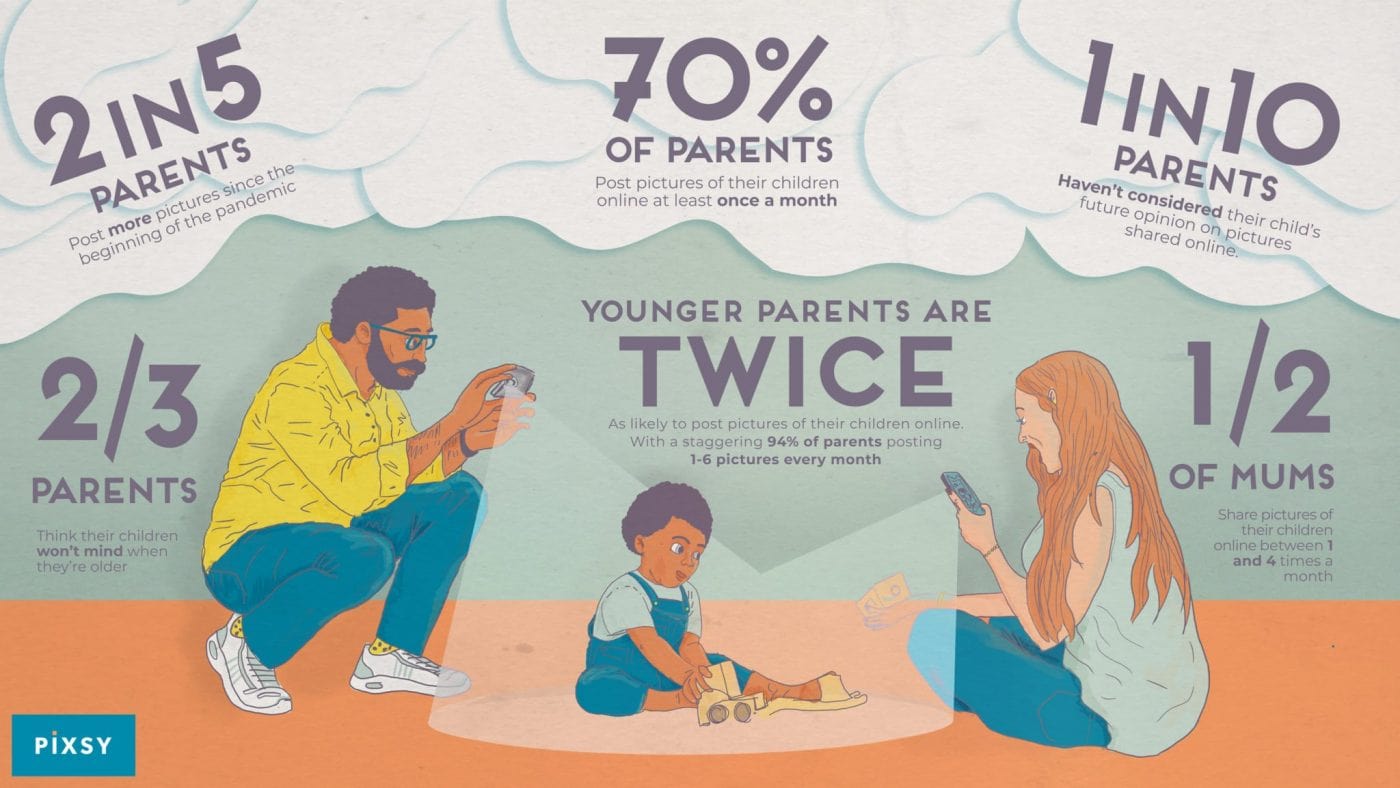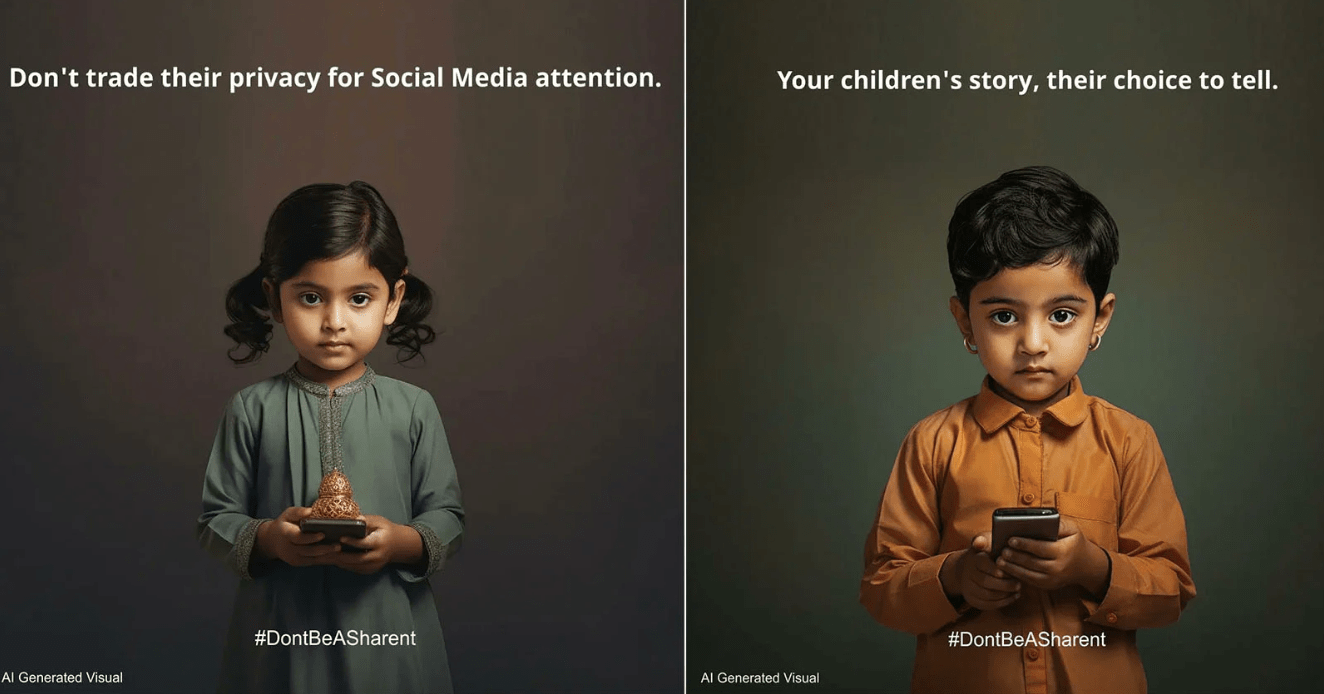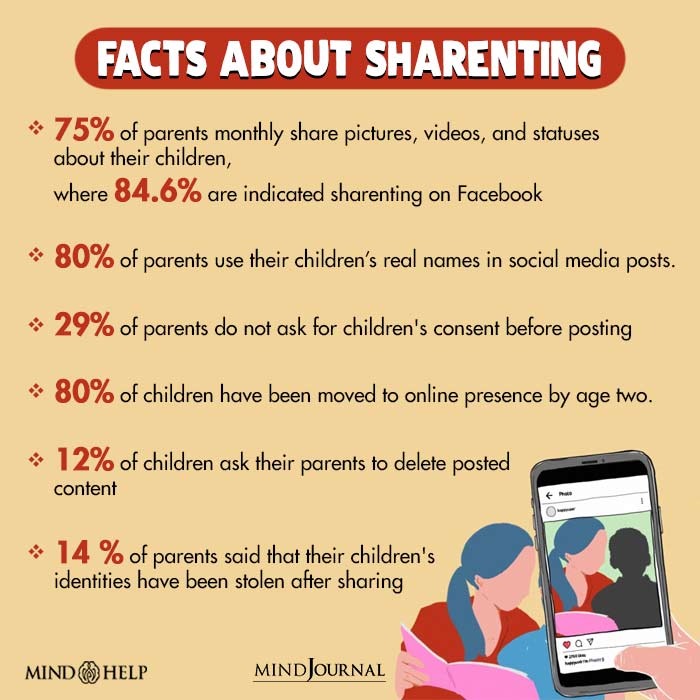Sharenting refers to the act of sharing the personal information of underage kids online. From identity theft to privacy breaches, the dangers of Sharenting are real.
In this article, we will discuss why Sharenting is a concern, what personal information is at risk, and how you can protect your kids from the risks associated with sharing personal information online.
Key Takeaways
What Is Sharenting?
Sharenting refers to the practice of parents sharing information about their children online. This practice has become common, with many parents on social media posting about their children’s lives.
While sharing children’s images on social media can keep family and friends updated…
It raises privacy issues.
Parents need to be mindful of the potential risks of sharing children’s photos and videos. The phenomenon of sharenting can affect a child’s online privacy and digital footprint later in life. It’s essential to consider children’s privacy and seek their consent when appropriate. Before posting content about your children for everyone to see.

Why Sharing Photos and Videos of Your Kids Is a Concern?
Sharing children’s images and videos on social media may seem harmless but poses significant risks. Sharenting poses a significant concern due to the various privacy risks, potential data breaches, and cybersecurity threats that kids may encounter later in life. Protecting children’s online privacy in the age of social media is crucial. Here are some of the concerns:
- Identifiable Information. Shared images can reveal personal details like address, school, and date of birth.
- Digital Footprint. Children on social media develop a permanent digital presence that’s impossible to erase. They can be made fun of or judged later in life, for something they didn’t even post.
- Privacy Issues. Parental sharing affects children’s rights to privacy and consent.
- Exploitation Risks. The National Center for Missing and Exploited Children warns of potential misuse. It’s not uncommon for parents to seek emotional or financial benefits by leveraging their children’s presence online.
Parents need to think before they talk about their kids online. Sharenting behaviours should be mindful and responsible to protect children’s well-being and privacy. Privacy violations stemming from sharing can lead to identity theft, financial fraud, or unauthorized access to sensitive information.

What Personal Information is at Risk?
Sharenting has become widespread. Posting photos and videos can expose children to privacy risks and digital data misuse. It may affect children under the age of consent and infringe on their rights to privacy.
It’s essential to consider the long-term impact on their digital footprint and overall well-being.
Here are some specific dangers of sharenting:
- Identifiable Details. Names, birthdates, and locations can be easily extracted from posts.
- Photos and Videos. Shared images can be misused or exploited by unauthorized individuals.
- Digital Footprint. Children develop a permanent digital presence, impacting their future privacy.
- Behavioral Data. Information about habits and activities can be collected and analyzed.
- Sensitive Information. Medical conditions, school details, and personal interests can be exposed.
- Location Data. Geotagged photos can reveal home addresses, schools, and frequented places.
- Psychological Impact. Growing up with their lives on social media can affect children’s well-being and self-esteem.
Parents should carefully manage their social media use and be mindful of the potential risks when sharing their children online.

Data Collection Concerns
Sharenting raises significant data collection concerns. When parents post about their children… They expose personal information to data collectors and marketers.
Pictures of their children shared on social media can be used without consent, leading to privacy infringements. The prevalence of sharenting means children’s data is collected from a young age.
Potentially monetized by third parties.
It’s crucial for children and parents to be aware of these risks and take steps to protect their digital privacy. By being mindful of data collection concerns…
Parents can safeguard the personal information and well-being of their children.
How Can You Protect Your Kid’s Personal Information?
To protect your kid’s personal information, parents should use social media wisely. Avoid sharing pictures with identifiable details. Always seek permission before sharing your child’s information. And be mindful of the long-term effects of sharenting.
Adjust privacy settings to control who sees your posts. Also, use strong passwords and enable two-factor authentication.
Remember, putting your kids’ privacy first can prevent negative consequences. By following these steps, you can reduce risks associated with sharenting and protect your children from potential harm.

What Are Some Best Practices for Online Privacy?
To protect children’s online privacy, parents should follow best practices when sharing their children’s images on social media accounts. Here are some tips:
- Limit Personal Information. Avoid posting identifiable details like full names, birthdates, or locations.
- Private Accounts. Keep social media accounts private to control who sees your posts.
- Be Selective. Share images with family members and friends through private channels. One of those channels can be Klokbox, more about that later.
- Think Before Posting. Consider the long-term impact on your child’s digital footprint.
- Review Privacy Settings. Regularly update and review your social media privacy settings.
Parents who share should think before they talk about their kids online. Following these best practices can help safeguard the well-being and privacy of children.
How Can Sharenting Lead to Identity Theft?
Sharenting can put children at risk of identity theft and other forms of exploitation. It can lead to identity theft in several ways:
- Data Collection and Misuse. Shared images can reveal names, birthdates, and locations, providing information for identity thieves.
- Geotags and Location Tracking. Photos with geotags can expose the child’s school or home address, enabling location tracking.
- Clean Slate. Children’s identities are attractive to thieves because they often have no existing financial records.
- Data Breaches. Compromised social media accounts can expose children’s information to malicious actors.
- Image Exploitation. Stolen images can be used to create fake profiles or shared on shady networks.
Parents should be cautious and protect their children’s digital identities to prevent these risks.

What Can You Do to Prevent Sharenting?
New parents often engage in sharenting by posting images of their children online. While sharing their children’s milestones can be tempting… It’s essential to think before we talk about our kids online.
Studies conducted by West Virginia University highlight the need to consider children’s privacy and consent. Avoid sharing identifiable information in the photo of your children. Share these images only with trusted family members and friends.
Regularly review and update social media privacy settings. Understand that shared images develop a digital footprint affecting the child’s future. By following these best practices, parents can protect the well-being and privacy of their children in the age of social media.
Relive Your Stories on Klokbox
Why Use Klokbox Instead?
Klokbox offers a secure way for parents to share images of their children with trusted family and friends. Unlike other platforms, Klokbox prioritizes online privacy protection acts. This ensures photos of their child are safe and not shared on social media without consent.
Parents can confidently capture the growth of their children on Klokbox. Knowing their digital footprint is private and protected. By using Klokbox, you’re putting your kids’ privacy first, reducing the risks behind sharenting. It’s the ideal choice for parents wanting to protect the lives of their children… in the age of Instagram presentations of their children.
Conclusion
The prevalence of sharenting highlights the need for caution and mindfulness when sharing your children online. While many parents enjoy sharing their opinions and experiences with sharenting… It’s crucial to consider the long-term impacts on the children involved. Photos of your children can easily be misused if not properly protected.
Children and parents must navigate this digital landscape carefully. Before posting pictures of your children, parents should ensure they give consent and understand the risks.
Sharenting should not compromise the safety or privacy of any child.
Marketing and public policy researchers emphasize the importance of balancing social media sharing with privacy. By putting your kids’ well-being first and following best practices… You can enjoy the benefits of connecting with family and friends without unnecessary risks. For a safer alternative, consider using platforms like Klokbox. You get the benefits social media offers, but in a closed circle, strictly selected by you. Which align with social marketing and public policy guidelines, ensuring your child’s privacy is preserved in every post.
Remember, parent posts are powerful and should be used responsibly to protect the lives of your children.

Frequently Asked Questions
Sharenting refers to parents sharing personal information, photos, and videos of their children online.
An example of sharenting is a parent posting pictures of their children on social media platforms like Facebook or Instagram. Sometimes even for emotional or monetary gain.
Negative effects include privacy violations, identity theft, digital footprint issues, and potential exploitation of children’s images.
Sharenting is a problem because it can compromise children’s privacy and safety, leading to long-term consequences for their digital identities.



